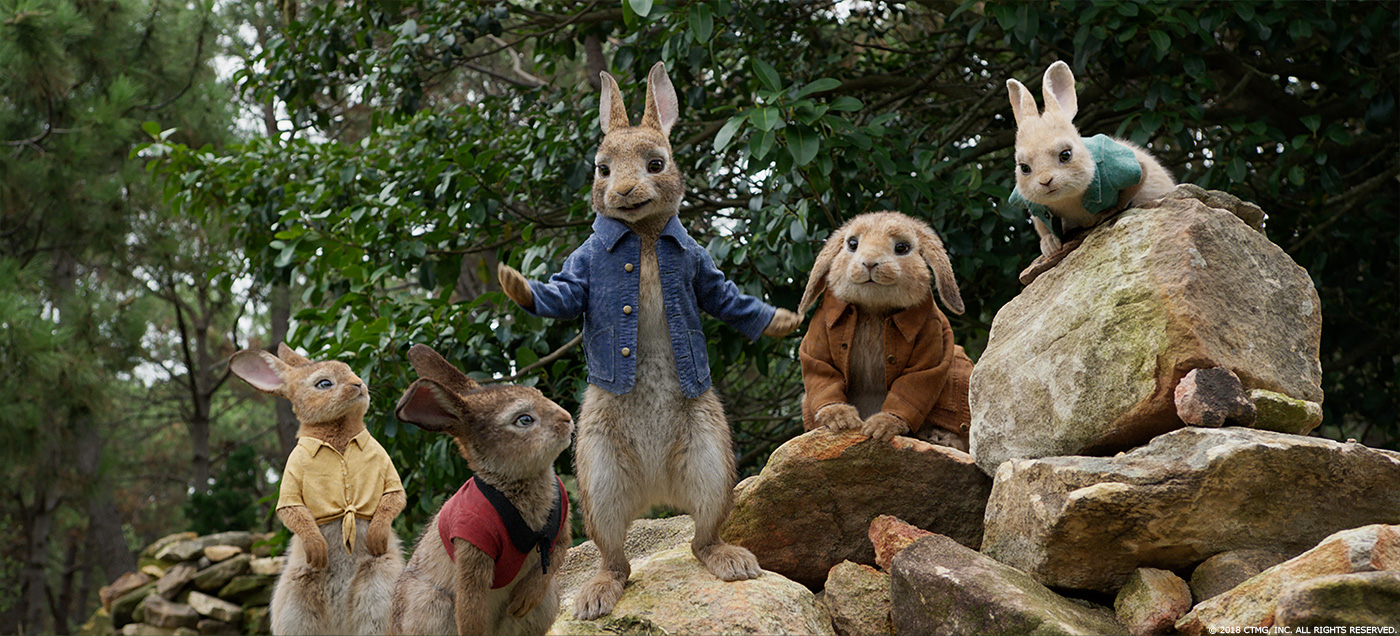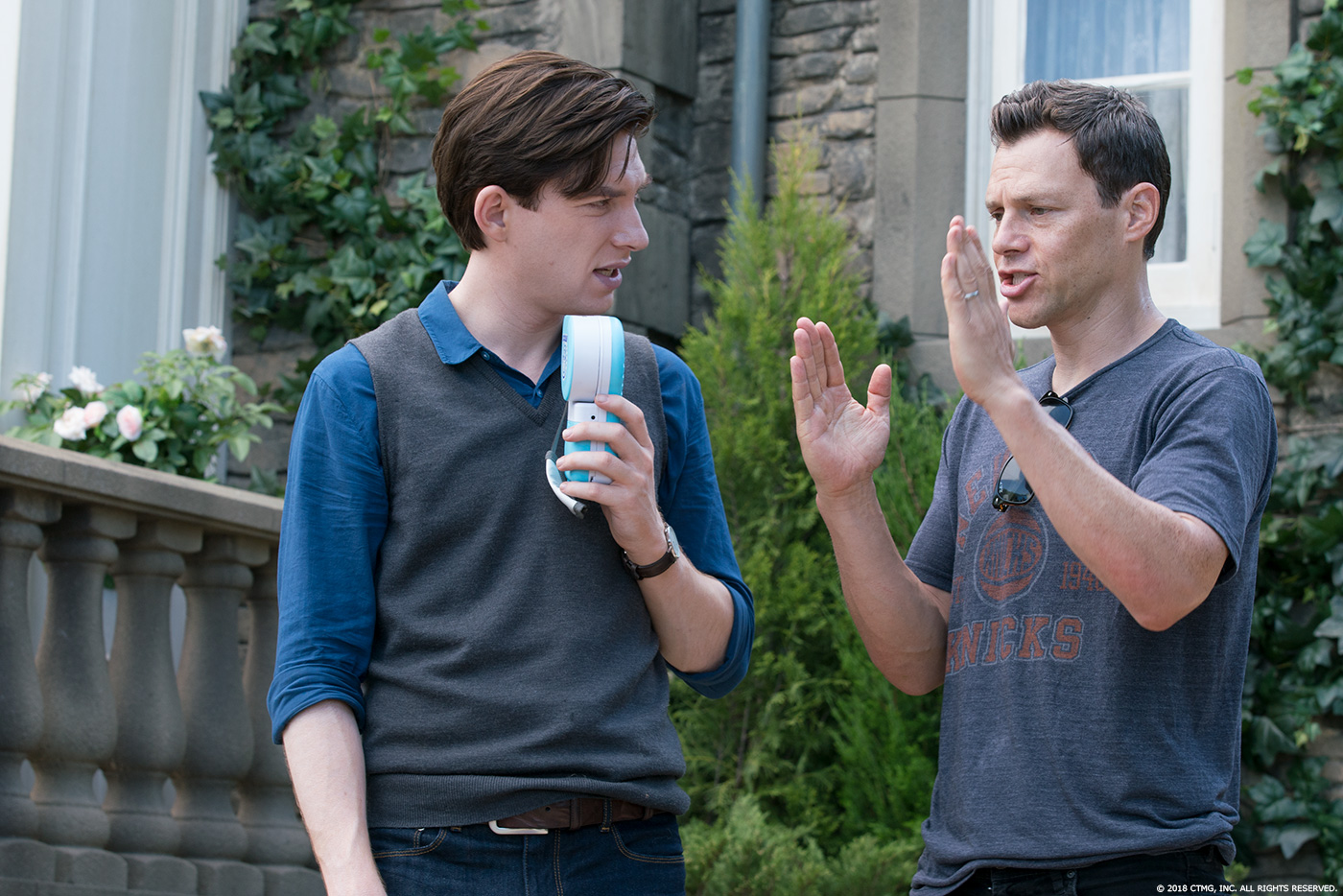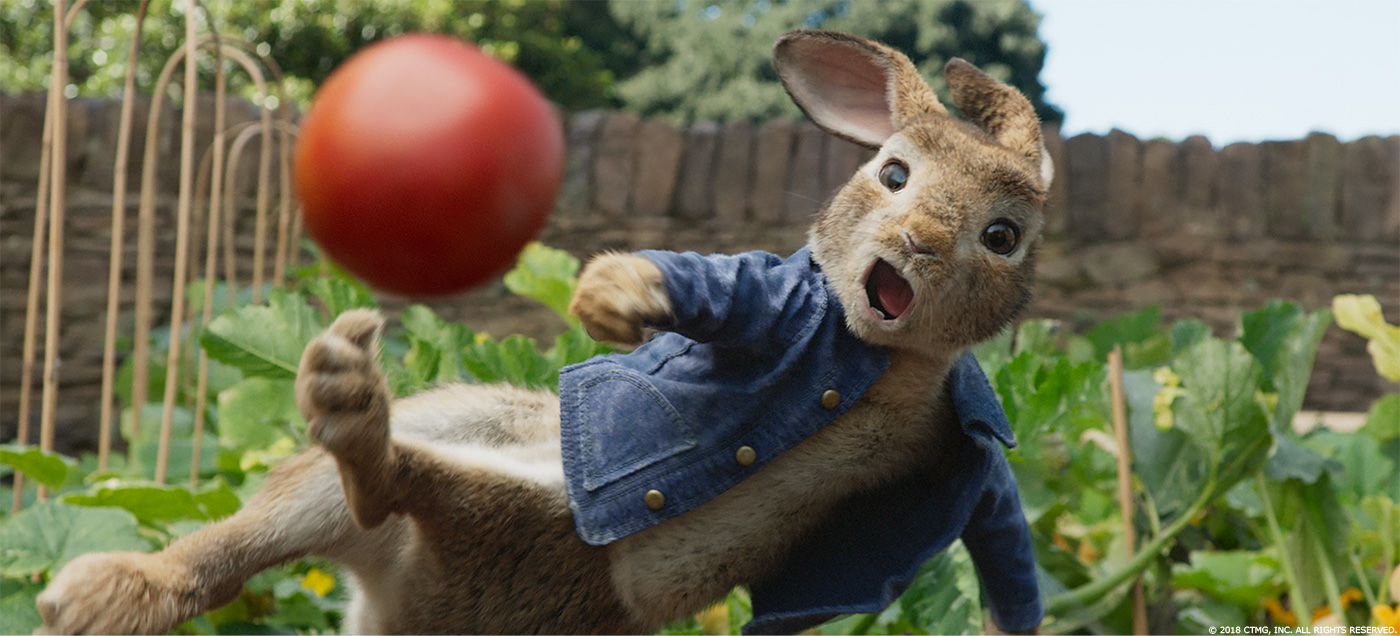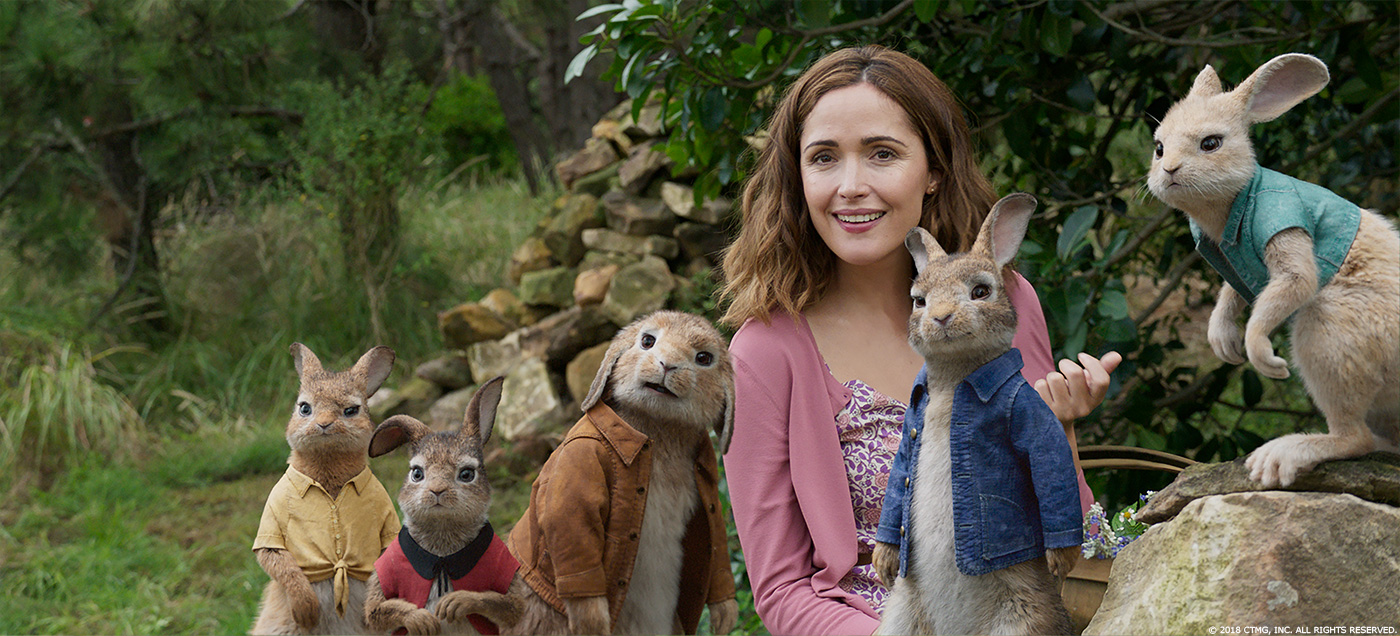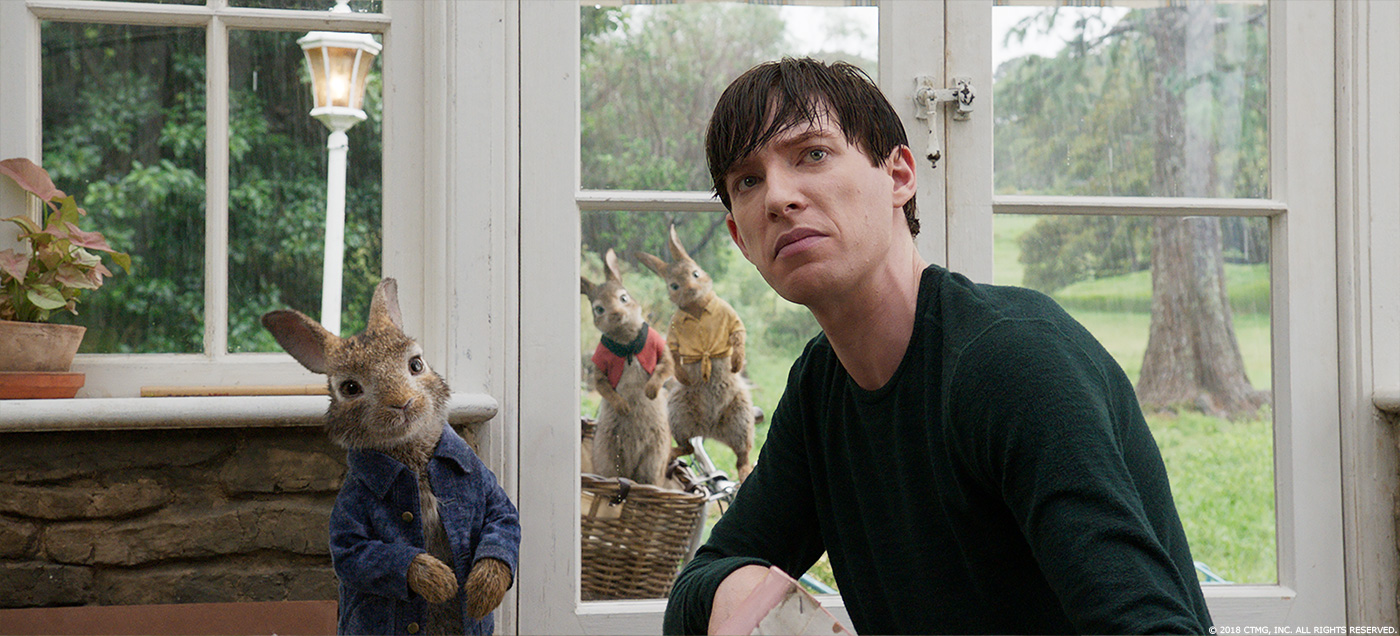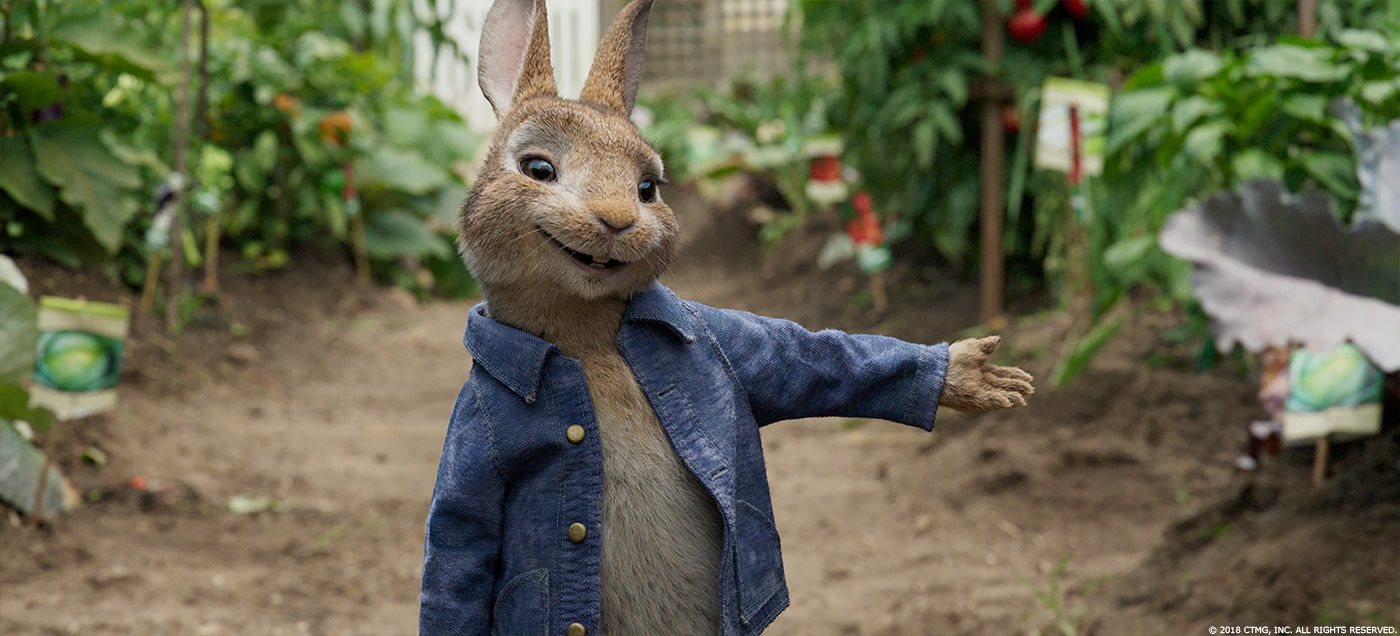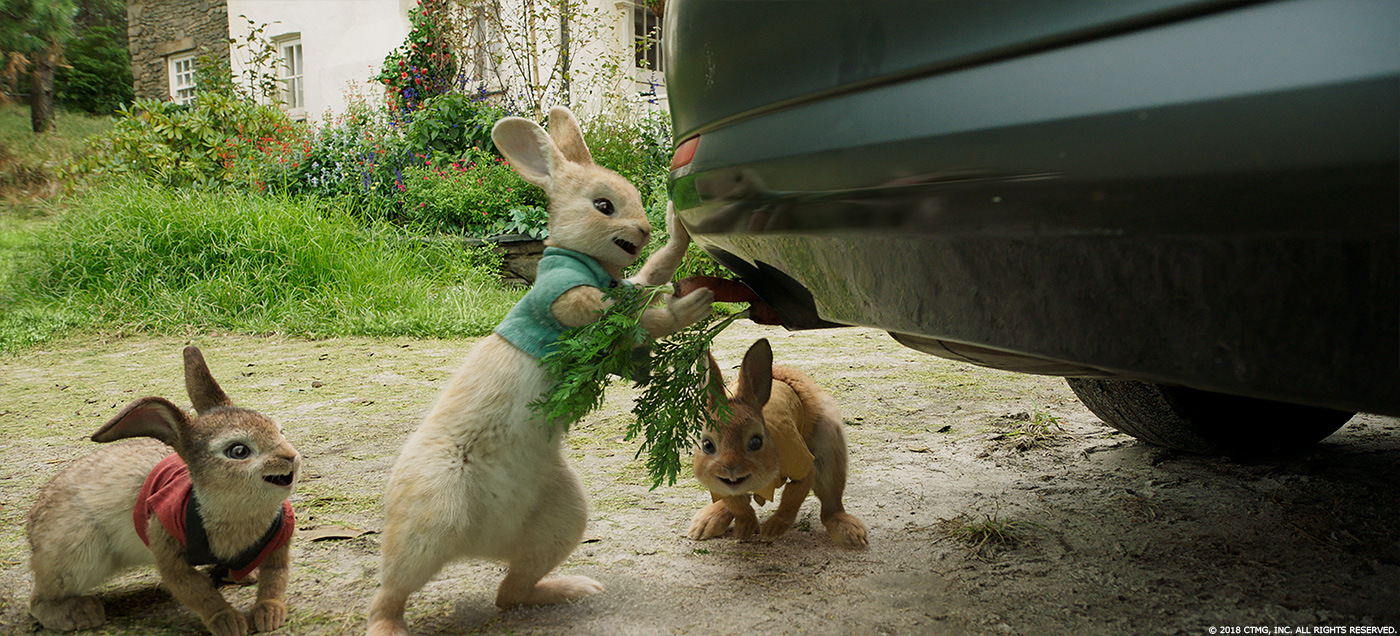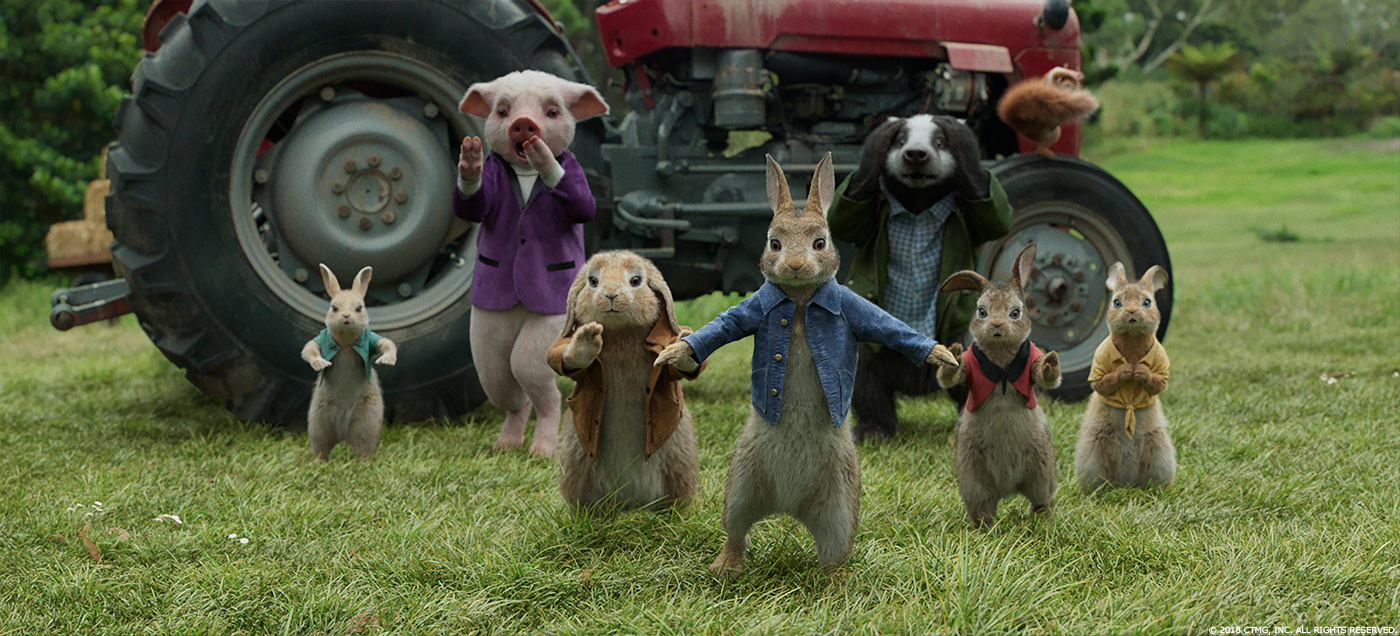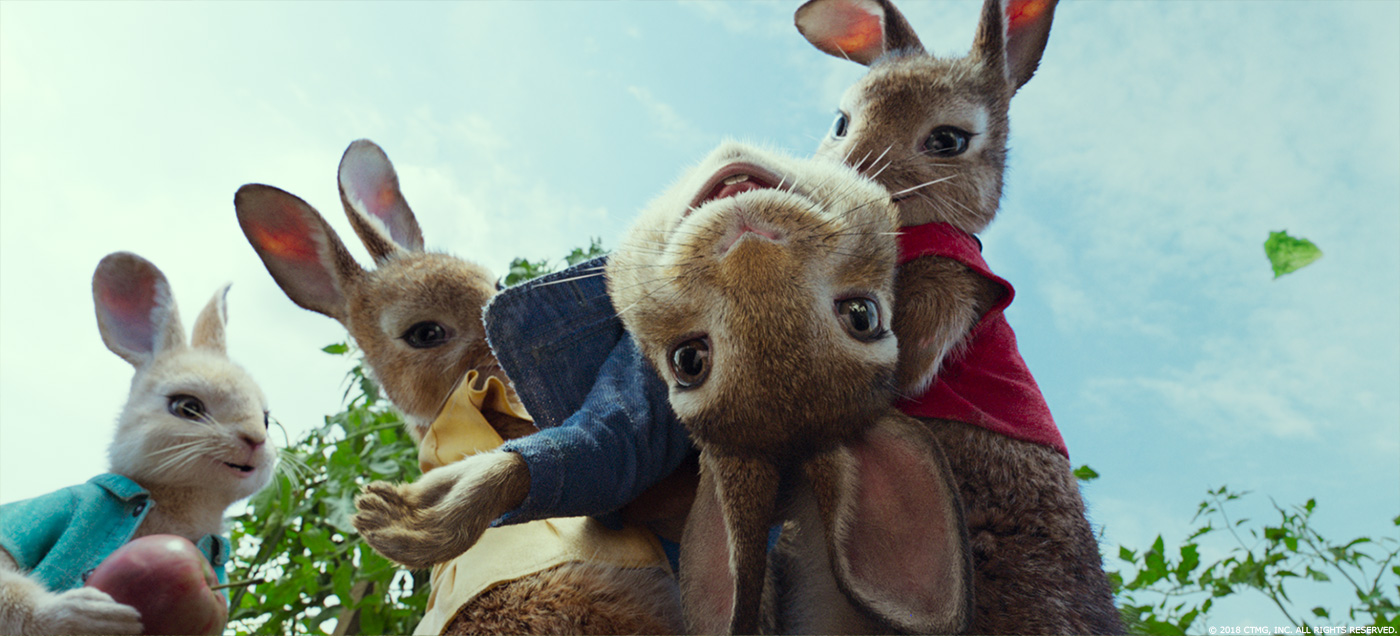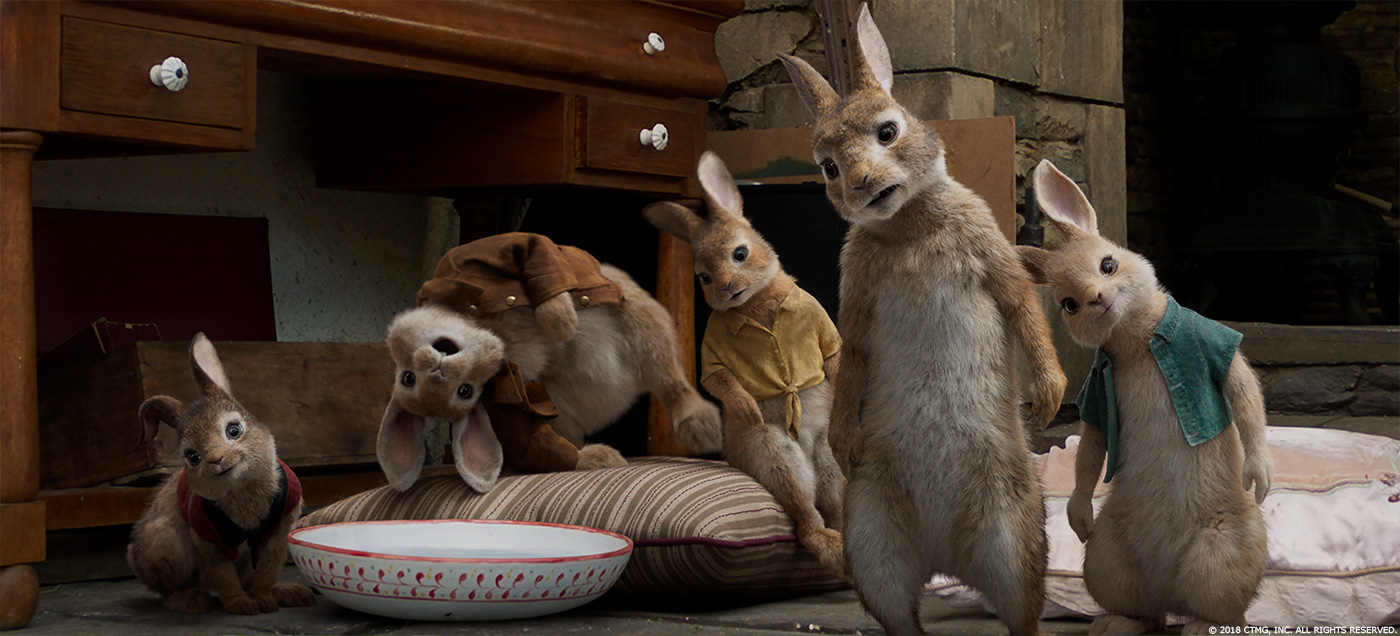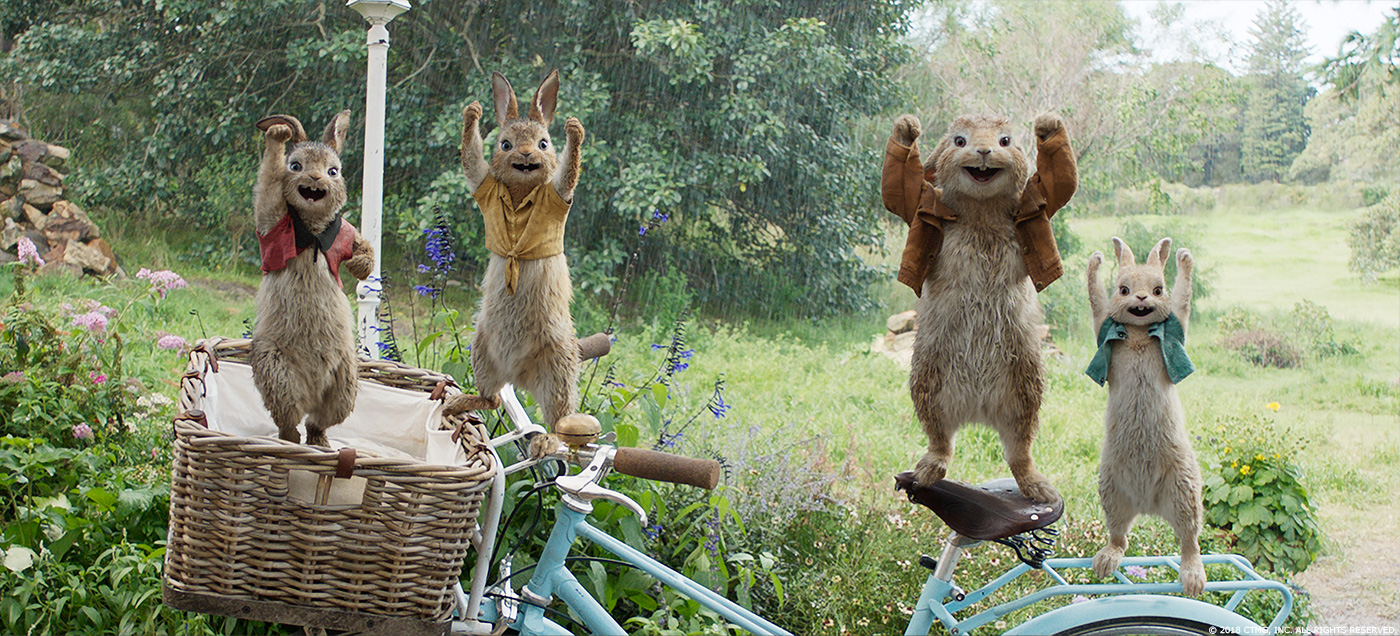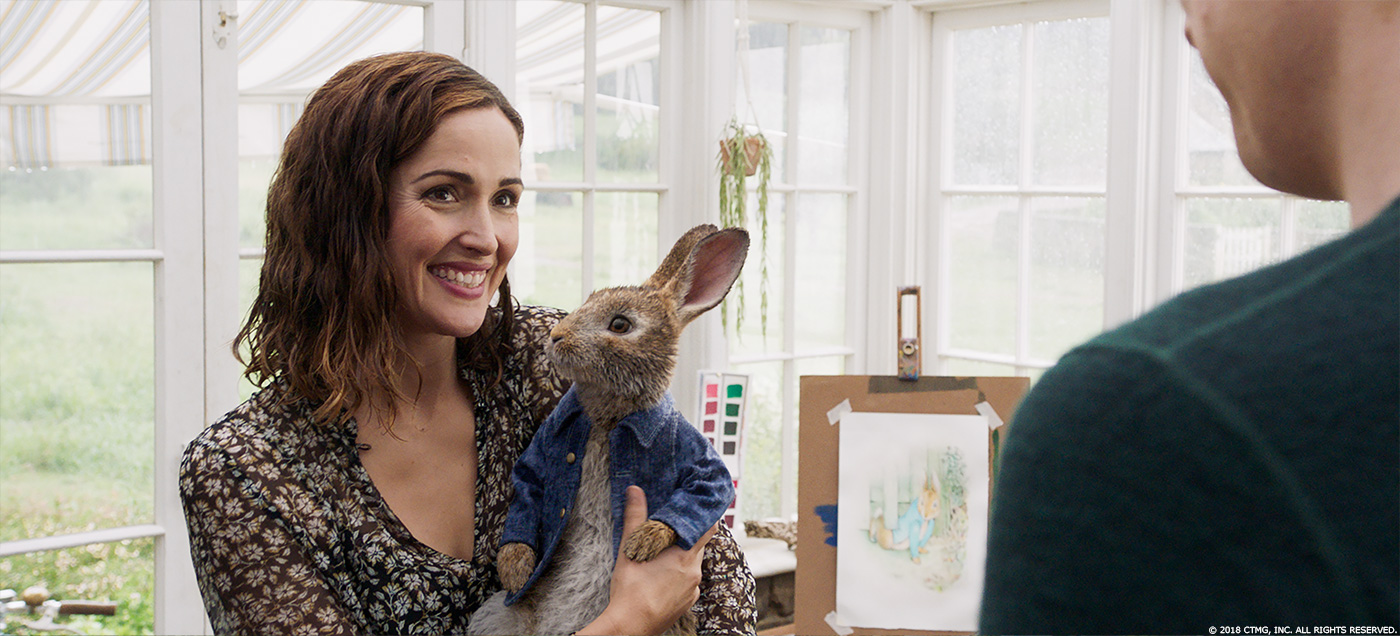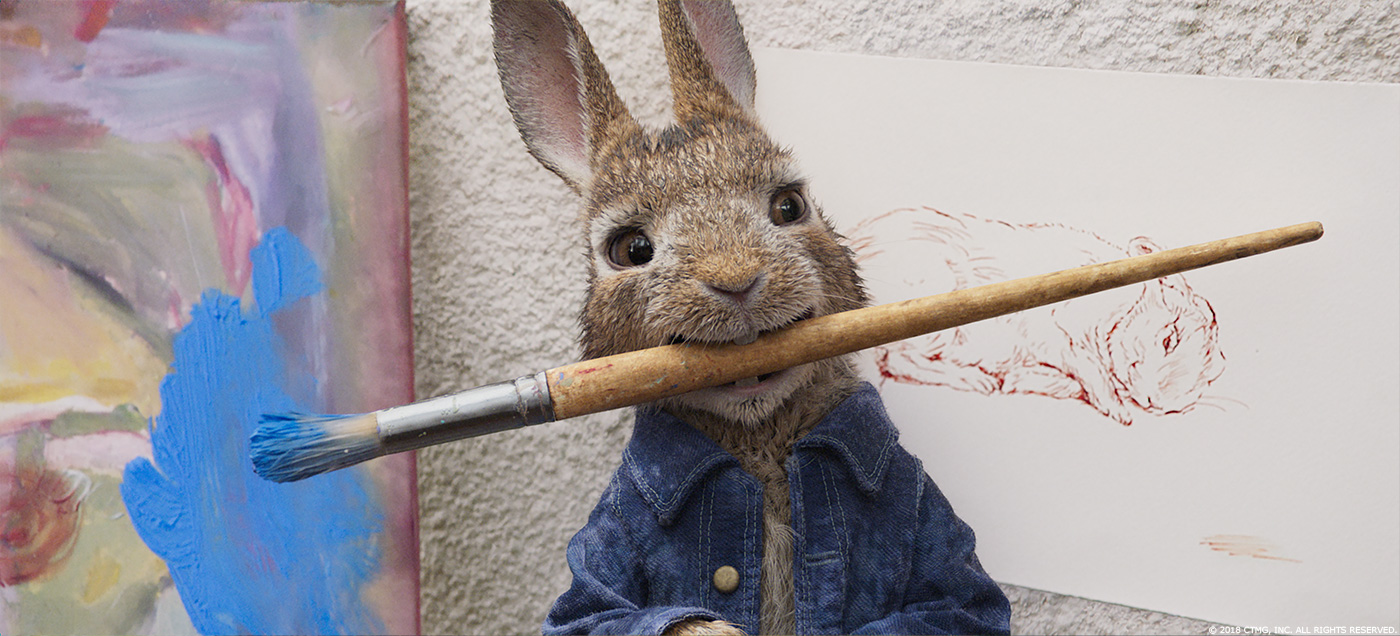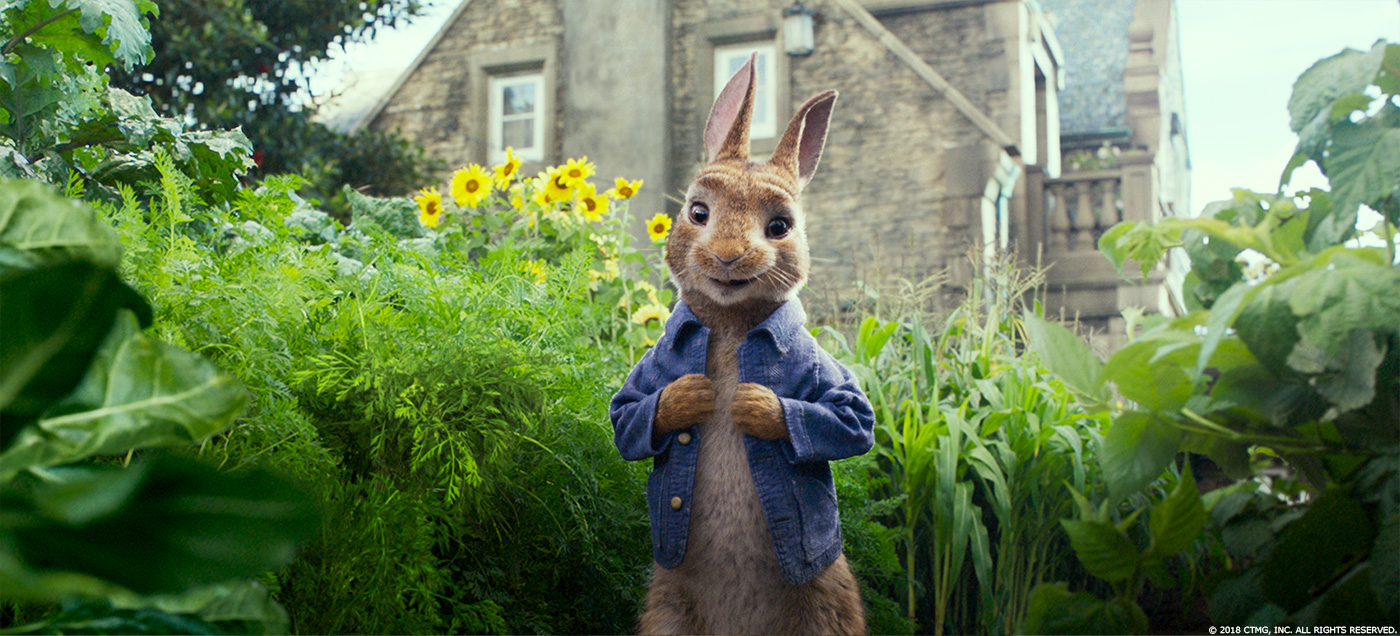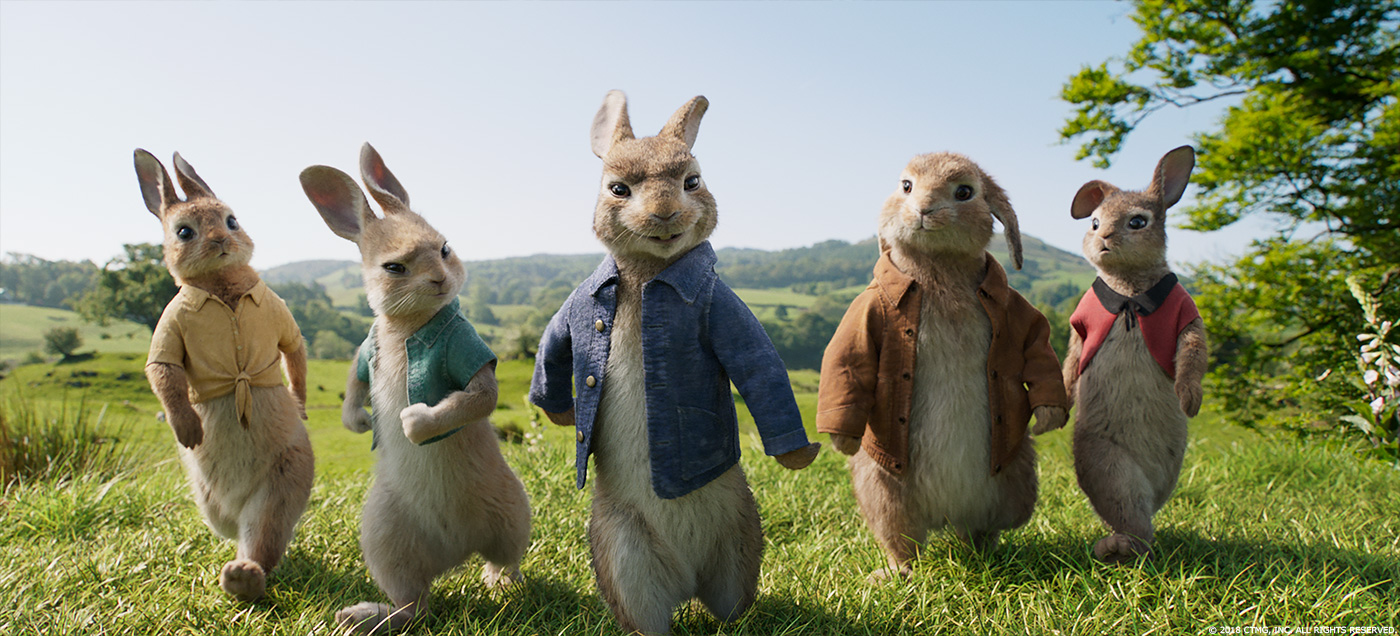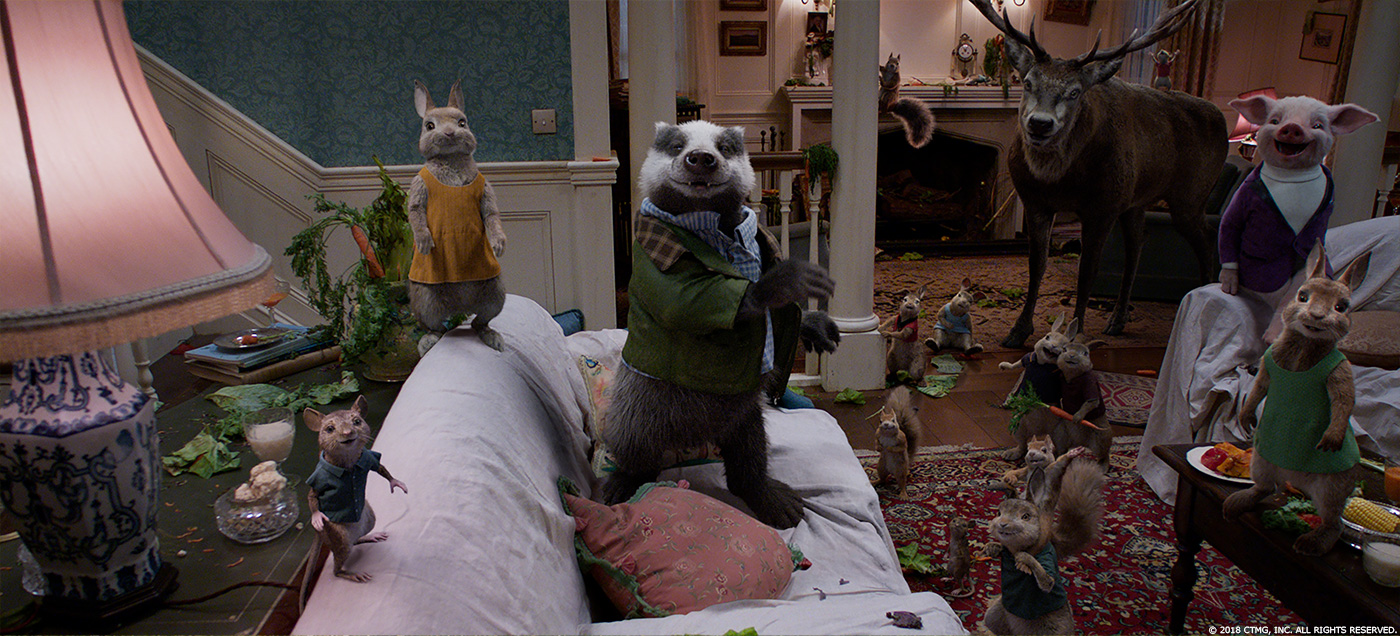Will Reichelt has nearly 20 years of experience in the visual effects, most of which at Animal Logic. He has worked on films like WORLD TRADE CENTER, AUSTRALIA, KNOWING and SUCKER PUNCH. As a VFX Supervisor, he took care of the effects of films such as WALKING WITH DINOSAURS 3D and MONK COMES DOWN THE MOUNTAIN.
With more than 32 years of experience in animation and VFX, Rob Coleman has worked on many films such as THE MASK, DRAGONHEART, STAR WARS (EPISODE I, II and III), HAPPY FEET TWO and THE LEGO BATMAN MOVIE.
What is your background?
Will Reichelt // I started working at Animal Logic in 2002 in the Commercials division as a 3D Generalist, then joined the film division in 2006 as a sequence lead, where I got the chance to assist on set for projects such as Oliver Stone’s WORLD TRADE CENTER and Baz Luhrmann’s AUSTRALIA. I’ve been VFX supervising since 2013 on projects like WALKING WITH DINOSAURS 3D and Chen Kaige’s kung-fu film MONK COMES DOWN THE MOUNTAIN.
Rob Coleman // I have always been interested in the combination of animation and live action. Early memories include watching Dick Van Dyke dancing with the penguins in MARY POPPINS. Even at that young age, I knew the penguins were cartoons, drawn by hand, but magically they were sharing the screen with real people. I was fascinated with computers in high school, joining the first computer science course in 1981. I studied animation at university in Canada and was an early adopter of computer animation. A dream came true when I was hired by Industrial Light and Magic in 1993 shortly after their ground breaking computer animated dinosaurs hit the screen in JURASSIC PARK. I moved to Australia in 2009 and joined Animal Logic in 2012.
How did you and Animal Logic get involved on this show?
Will Reichelt // The film was originally conceived as a hybrid live-action/animation film by Animal Logic Entertainment (our development arm), who then partnered with director Will Gluck’s Olive Bridge Entertainment to set the project up at Sony/Columbia in 2014. When Will signed on to direct, the film went into active development here at Animal Logic in Sydney in January 2016 with storyboarding, editorial reels and character design.
Rob Coleman // I was one of the later additions to the show, I did not get involved until February 2017, as the live action was being shot. During the story and pre-production phase of PETER RABBIT in 2016, I was busy supervising the animation in THE LEGO BATMAN MOVIE.
How was the collaboration with director Will Gluck?
Will Reichelt // Will is an amazing collaborator. He’s smart, hilarious, uncompromising, works exceptionally hard, is demanding in the best way, and was always trying to figure out how to make the film tighter, funnier and be the best it could be. He was constantly changing things, right up until the last minute – sequence edits, dialogue lines, framing, staging etc – but all in the interest of making a great film!
Rob Coleman // The collaboration with Will Gluck was great. He is a very energetic, passionate director. He is continually refining the script, the voice records and the edit to ensure that he has the best movie possible. He challenges the people around him to bring their best ideas and work. He welcomes debate and discussion, all in service of extracting the best out of the script, the performances and the edit.
That’s his first big VFX feature. What was his approach and expectations about the visual effects?
Will Reichelt // Like any director, he expects the best. Given it was the first time he’s used such complex VFX in any of his movies, he was eager to learn and was very quick to figure out what was possible. From a process point of view he trusted us completely, and we had a great working relationship in that regard, plus he was uncompromising in terms of quality and was constantly pushing us to do better, which I appreciated.
Rob Coleman // PETER RABBIT was his first film with animation, so we worked closely with him to guide him through the animation process. For any director used to the pace of a live action shoot and edit, working in animation can seem like working in slow motion. It takes a lot of time to create believable animated performances. As Will got used to the process he was able to work directly with the animators to craft rabbits’ acting and actions. He learned about « the Blocking phase », the layered approach to refining the body and facial performances and how a performance will metamorphosis from something very rough to something that is beautifully polished.
How did you organize the work with your VFX Producer and amongst the Animal Logic offices?
Will Reichelt // All the visual effects work on PETER RABBIT was done out of our Sydney office, between January 2017 to February 2018. We had been prepping the characters, doing animation testing and getting our pipeline ready for plate ingestion during the pre-production period so we’d be ready to go when sequences started getting turned over. Editorial began cutting the movie right from when the shoot started, and we were also able to start animating the full-CG sequences set inside the burrow without waiting for anything to be turned over.
We also knew early on that we weren’t going to be able to complete all the VFX work on the film ourselves within the timeframe, so Jason Bath and Brian Lynch (Associate Producers) and I figured out what we could separate out and give to other vendors to complete. We ended up engaging some of Australia’s best VFX vendors – Rising Sun Pictures, Cutting Edge, Cumulus VFX and Slate VFX – for the additional work.
Rob Coleman // It takes a team of production folks to plan, schedule and deliver a huge film like PETER RABBIT. It truly is an enormous collaborative effort. The heads of the various departments (layout, animation, effects, lighting, compositing, etc.) review the scenes coming out of editorial and they bid the number of days it will take to do the work in each of the shots. The VFX producer reviews those bids and considers them against the overall bid for the movie. They work with the studio in order to ensure that the complexity and time required is being tracked and then they give the ok for the sequence to go into production. For PETER RABBIT, Animal Logic Sydney handled all of the rabbit and other creature animation except for the rooster and the hero sparrows which were animated at Rising Sun Pictures.
Can you tell us more about the previz and postviz work?
Will Reichelt // The previz was an interesting mixed bag of techniques. We began with traditional storyboards and did some full CG previz for the more action-oriented sequences, but one of the more unusual things we did was a process we called “Bunny Troupe”, which was a kind of live-action previz. During pre-production while the sets were still under construction out on location in Centennial Park, we spent a couple of weeks in the garden, with cardboard representations of the rabbits on sticks, figuring out how to stage the action and filming shots from different angles on consumer-grade DSLR cameras. The footage was then edited together with the boards and previz to provide reference reels which were used to break down the shoot, figure out shot lists and also provide Plate Unit with the information they needed to shoot their material.
Rob Coleman // The previz and postviz focussed primarily on indicating where the rabbits were going to be in each of the sequences. Since this was predominately a film with live action backgrounds, the director and the editor needed drawn rabbits as placeholders composited over the live action backgrounds as placeholders until the animation team was able to provide animated rabbits for all of the shots. Having the postviz drawn rabbits over the backgrounds also allowed the film to be screened to test audiences. They were able to understand the film even without the animated rabbits there.
Where was filmed the different parts of the movie?
Will Reichelt // The movie was shot mostly in Centennial Park, a beautiful nature reserve very close to Fox Studios here in Sydney, where the Animal Logic studio is based. This is where the exterior of the McGregor Manor and Bea’s cottage were built. We also did day trips out to other locations around Sydney for various scenes such as the train station, or for some of the driving scenes as well as shooting interiors on the stages here at Fox. After the Sydney shoot wrapped, Main Unit re-located to London, where we shot inside Harrods’ department store, as well as at some iconic London landmarks such as Piccadilly Circus, Trafalgar Square and Buckingham Palace. We also spent a significant amount of time in the Lake District itself, shooting aerial footage, background plates for the beginning of the movie and other elements.
Can you explain in details about your work on the London sequences?
Will Reichelt // The highlight of working in London was getting to spend two full nights shooting inside Harrods’ department store. The store would close at around 9pm and then we had the run of the whole store until opening time the following morning. That place is incredible – it’s like a whole world unto itself. The other London scenes are a montage, with the rabbits being shown around the city by Johnny Town Mouse, so we got to go a lot of tourist attractions and famous landmarks.
How did you work with the art department to design the various cute characters?
Will Reichelt // Our starting point was the original Beatrix Potter illustrations and stories to get as much information as we could about what she intended – Peter’s blue jacket, for example. We then did a lot of studying of real rabbits, looking at their physiology, the look of their fur, etc. The ultimate goal was to create cute and appealing characters that were infused with the spirit of Beatrix Potter, but also looked like real animals, not cartoon characters.
Can you explain in details about their creation and especially the rabbits?
Will Reichelt // There were a couple of significant challenges with the rabbits. One was that they needed to be able to stand and walk on two legs as well as go down on all fours and run. In the beginning we weren’t sure how much time they would spend in either state, but as we started to do animation tests we realised that whenever the rabbits would run on two legs it broke the illusion of them being real animals and took them into cartoon character territory, so we eventually figured that while they were talking and interacting as characters that they would stand on two legs, but if they were on the move and needed to get from one place to another that they would go down and run on all fours.
We also had to figure out how the faces would work, particularly how far apart the eyes were and how that impacted on the audience’s perception of them as characters. Real rabbits have eyes on the sides of their head, but when we did that it didn’t feel like we could connect to them enough as characters, plus it also didn’t seem right that we weren’t able to see both their eyes unless they were looking down the barrel of the lens. However if the eyes came around too far to the front, they looked a bit too much like a kangaroo, and also a touch too “human”. In the end we did a model wedge going from ‘real rabbit’ all the way to ‘human’ and found the sweet spot where it felt just right.
How was simulated their presence on-set and for the interactions?
Will Reichelt // We had a number of different representations of the characters on set which we call ‘stuffies’. For simple shot blocking we had foam board cut-outs on sticks which were light and easy to run into a shot. We also had a beautiful proper sculpted version of Peter covered in real rabbit fur that we would shoot at the end of each setup to give the Lighting department reference for how real fur would look in the different lighting conditions. For shots where the actors needed to touch, hold and interact with Peter we used a wide range of things to help simulate the interaction. We had a relatively physically-accurate sock-puppet style version of Peter that was weighted correctly that the actors could hold and throw around, but we also had people in blue suits, blue sticks, monofilament wire and other things that we would use to poke and prod the actors with at various times.
Rob Coleman // We knew that the interactions between the rabbits and the humans were going to be the most difficult shots in the movie. Various stand ins were created — furry, stuffed toys which could be photographed on set to give a precise indication of light and shadow and then blue objects, at the correct scale, which the actors could hold on to. We wanted the actors holding on to actual items as this would allow for our tracking team, rotoscopers, animators and compositors to have something to work with, somewhere specific to put our computer generated rabbits.
Can you tell us more about their rigging?
Rob Coleman // The riggers studied real rabbit anatomy, their skeletal and muscles. That knowledge was then applied to our rabbits. The riggers did have to make many creative decisions because our rabbits were going to have to move in ways that are impossible for real rabbits. For example, real rabbits can and do stand up on their hind legs, but they do not walk on their hind legs. Our rabbits needed to walk, hop and run on both four and two legs.
What kind of references and indications did you received for their animations?
Rob Coleman // We spent a lot of time during the early development phase studying video of real rabbits moving around. We wanted to replicate real rabbit actions, movements and behaviours.
How did you manage their face animations?
Rob Coleman // The rabbits in PETER RABBIT do have stylised faces. Real rabbits have their eyes on the sides of their heads, our rabbits’ eyes were moved more towards the front of their face in order to help with facial expressions, reading their emotions and understanding their eye directions.
Can you tell us more about your work on their eyes?
Will Reichelt // One of the main things we focused on in every shot was to make sure that the eyes looked good. Besides having a proper setup of physical elements within the eye, correct refraction, etc we would also often use specific lights on the eyes to replicate a caustic effect, plus manually tweak the reflections to make sure that the felt vibrant and not glassy.
Rob Coleman // The modelling and surfacing team did a brilliant job on the eyes. Obviously eyes are “the window to the soul” so having believable eyes even at the animation phase, before final lighting, was vital. We needed realistic reflections, highlights and shading to bring the eyes to life. There was continual work through the show to make the eyes look the best they could be.
How did you handle the fur challenge?
Will Reichelt // The fur is created with our proprietary grooming tool called ALFRO. It’s been in development here at Animal Logic for many years and has been iterated many times across the different projects we’ve worked on. A new suite of grooming tools within ALFRO were developed just for PETER RABBIT. There are between 5-8 million hairs per character, and we spent a lot of time getting the amount of clumping and scraggle just right, particularly on the rabbits. We didn’t want them to look brushed like they’d just come out of a hair salon, but we also didn’t want them to feel rough and dirty.
Rob Coleman // Fur is very challenging. Once again the surfacing team did an amazing job. The fur on the film looked fantastic. To complicate matters, the rabbits also wore jackets which meant that the fur simulations also had to interact with cloth simulations.
The animals are seen is various lighting conditions. Can you tell us more about this aspect?
Will Reichelt // We had a good system for reference gathering on this movie that gave us a lot of great information on how the scene was lit for every setup. Besides the usual grey/mirror ball and colour chart, we would also shoot a reference of the furry Peter Rabbit stuffie, plus we had a number of polystyrene spheres wrapped in different types of fabric and fur that we put on sticks (called ‘kebabs’) that we would bring in and shoot as reference as well to cover the various different animal types we were featuring in the movie.
For capturing HDRI, rather than use the traditional method of a DSLR/multi-shot/nodal approach, we developed a new system using a VR 360 camera from indieCam called the nakedEye. The setup is smaller and more nimble than the DSLR approach so we could get the rig into tighter spaces and close to the ground where our rabbits would be. We collaborated with the manufacturers to develop modifications to the hardware and new software tools that enabled us to capture HDRI faster (which was welcomed by the on-set crew), and with more consistency to the data which enabled us to automate the ingest and processing, making things easier and quicker for us to get set up for lighting shots back at the studio. All of this was in service of getting as photo-real a look as possible for the rabbits, across any situation they were in, whether it was the garden in daylight or at night, inside McGregor’s manor, or in Harrods.
Which character was the most complicated to create and animate and why?
Will Reichelt // Peter Rabbit himself would take that honour, purely through the amount of research, testing, time and effort that was put into figuring out everything about him from his physiology, performance style, mix of rabbit vs human characteristics, as well as factoring in the vocal performance from James Corden which brought him to life. We began development on Peter in the first quarter of 2016, and we completed the final finishing touches on him in October 2017, a full year and a half later.
Rob Coleman // There wasn’t one character that was more complicated than the others, but I can say that the most complicate sequence was when Peter was fighting with McGregor in Bea’s cottage. The amount of interactions and the physical, broad movements made that scene the most difficult to animate.
What is your favorite shot or sequence?
Will Reichelt // My favourite sequence is the fight scene inside Bea’s conservatory. From the outset it stood out as the most complicated, ambitious sequence due to the amount of physical interaction there is between the actors and the CG characters. It was complicated to shoot, and it was a long, difficult to get right in post, but I think it turned out great and I’m really proud of the result.
Rob Coleman // Certainly one of my favourite sequences is when Peter and Benjamin are balancing on the wire over the garden. I remember seeing that sequence at storyboard phase and I was very concerned. I knew that to animate their movement and weight would be extremely challenging. I was worried whether we could pull it off. I think the animators did a brilliant job.
What is your best memory on this show?
Will Reichelt // Probably watching Domhnall Gleeson getting a blue stick shoved up his nose to get correct interaction on his face during the fight scene. He was amazing to watch, he threw himself completely into the physical comedy on this movie.
Rob Coleman // My best memory from the show was when I realised that we, as a group, had figured out to how to animate Peter and the other rabbits. It took a while to find the right balance to body movements and facial expressions but there came a day when we reached a point where to knew the characters. It happens on every show and it is always memorable and rewarding.
How long have you worked on this show?
Will Reichelt // I spent just over two years working on PETER RABBIT, from January 2016, until February 2018.
Rob Coleman // I worked on the movie for almost exactly one year (start of February 2017 – start of February 2018 ).
What’s the VFX shots count?
Will Reichelt // We had just over 1400 visual effects shots in total.
Rob Coleman // I don’t know what the VFX shots total was, but the total shots with animated characters was 1151 which was 59.8 minutes.
What was the size of your team?
Will Reichelt // There were over 500 crew at Animal Logic working on this film across 2017.
Rob Coleman // There were 77 animators who worked on the movie.
What is your next project?
Will Reichelt // No idea yet!
Rob Coleman // Animal Logic is currently working on THE LEGO MOVIE Sequel.
What are the four movies that gave you the passion for cinema?
Will Reichelt // Not particularly original, but it was – STAR WARS, BLADE RUNNER, BACK TO THE FUTURE and GHOSTBUSTERS!
Rob Coleman // MARY POPPINS (1964), THE JUNGLE BOOK (1967), STAR WARS (1977) and RAIDERS OF THE LOST ARK (1981).
A big thanks for your time.
// WANT TO KNOW MORE?
Animal Logic: Dedicated page about PETER RABBIT on Animal Logic website.
© Vincent Frei – The Art of VFX – 2018

